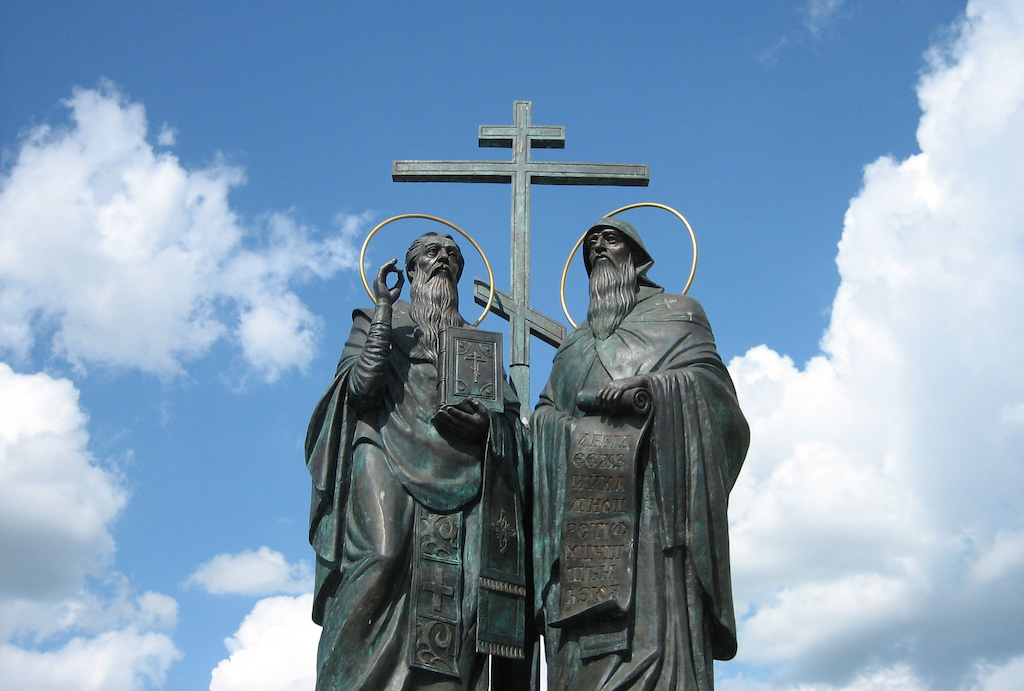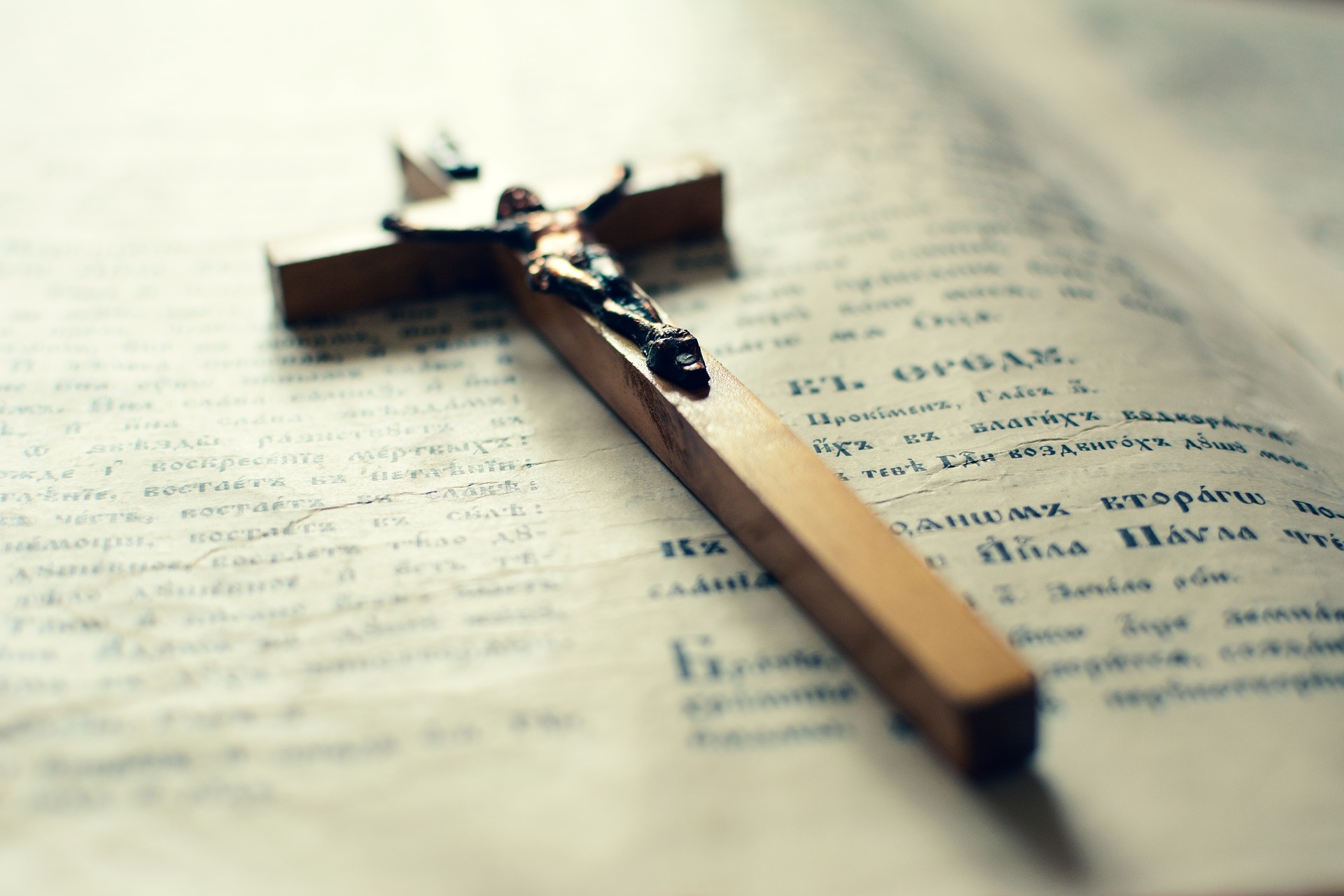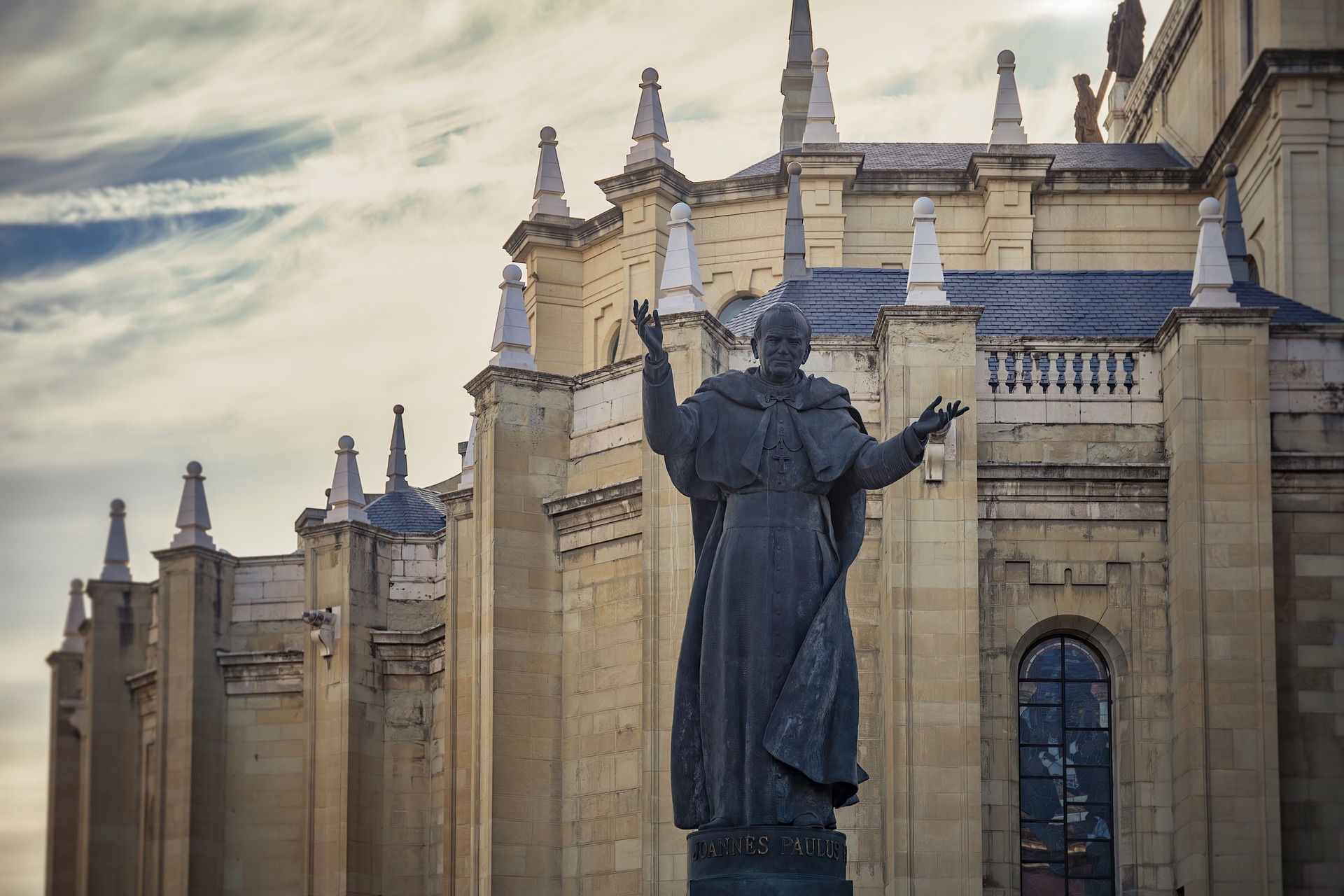What Is the Story behind the Cyril and Methodius Day?

There are two churches to Cyril and Methodius in Prague. One Roman Catholic; the other Orthodox. Both have dealt with a tragedy. One was a short burst of violence during WWII, while the other dealt with the ravages of a massive flood. One is better known by those outside Prague, while the other is more obscure to outsiders, yet both are known and loved within the city. In some ways, I feel this somewhat reflects the two brothers who brought Christianity to the Slavs. Cyril, the bright flame that burned out too soon, and his brother Methodius, moving at a slower, meticulous pace.
There is very little that is truly known of their early life. Both were born in the city of Thessalonica in what is now Greece. Their exact dates of birth are unknown but Cyril, or Constantine, as he was originally named, was born somewhere around 826-828 and would be the youngest of seven brothers. Methodius, who was originally named Michael, was born somewhere around 815-820. Truthfully, even those date ranges are simply educated guesses.
Methodius would take up in his father’s profession in politics and law, while Cyril would early show an aptitude for studies and language, and join the priesthood. For a time the brothers would take separate paths. Cyril would hold the office of Librarian of the Hagia Sofia library in the University of Constantinople and would sometimes be referred to as the Philosopher. I must say that this is not only a cool job but a great nickname.

Around the year 860, the Byzantine Emperor Michael III sent Cyril to meet the Khazars. The Khazars had requested a scholar who could discuss theology with both Jews and Saracens. Cyril’s language skills would be priceless in this endeavour. Some have claimed that Methodius accompanied his brother but there is no real evidence he did so. After Cyril returned to the University, he was a professor of philosophy. His brother had moved away from politics and had become a monk and abbot. At this time he gave up the name of Michael for the name Methodius. Religion and politics would be intertwined for the rest of his life.
Another interesting event occurred in 861 when Cyril found the bones of St Clement in Crimea and would travel with these for much of his life. Almost nothing is known about the how and why of this discovery and as the relics of St Clement continued through time, they have been lost and found on a couple of different occasions.
So, before we go further, the stage must be set to explain the situation these two brothers would soon become involved in. Politics is seldom easy but I will try to keep it simple. The Prince of Moravia Rastislav had come into power with the help of the Frankish ruler Louis the German. If Rastislav could remove the Roman Catholic influence and invite the Orthodox influence, he could gain the support of the Byzantine Empire and have more autonomy from the Franks. Michael the III saw a chance to expand his power.
In a political move disguised as religious, Rastislav requested missionaries to evangelize his people. Michael the III sent Cyril and his brother to Moravia. Before leaving, the brothers trained monks to assist them. Since the Slavic language did not have a set alphabet at that time, they created the Glagolitic alphabet. This would later transform to the Cyrillic alphabet, taking its name from Cyril. With all set in place, they began to translate the Bible into “Old Church Slavonic”, as it is called. This is still used in several Orthodox and in some Eastern churches. They even created a Slavic liturgy. This is where the problems began.

The German missionaries and priests believed that the liturgy should be only in Latin. Let’s add to this that a couple of different bishops claimed Moravia was their territory, all of them somehow tied to political power, and you can see that there is going to be trouble. Pope Nicholas I invited the brothers to Rome to see what he could understand of the situation. The brothers, a big herd of their disciples, and St Clements bones all headed out to Rome.
By the time they arrived in 868, the old Pope had passed away and Adrian II was the new one. With the advantage of a good argument for their cause and a gift of the relics of St Clement, the Pope was a fan, giving Methodius the title of Archbishop and granting him jurisdiction over Moravia and Pannonia. He was also given permission to use the Slavic liturgy. The Pope would ordain Methodius a priest himself.
Cyril would never leave Rome. He had been a sickly child and his health was always weak. He would retire a Basilian monk and only then did he give up the name Constantine for Cyril. 50 days later, on the 14th of February, 869, he would die. Cyril knew his brother wanted to return home and live his life in a monastery but on his death bed requested that his brother returns to Moravia.
Methodius would return to the Slavs but, due to more politics than we need to talk about, he remained outside of Moravia, in Pannonia, until he was “arrested” by the German clergy and held prisoner two years. The Pope finally forced his release and he would return to Moravia as Archbishop and church administrator.
In 884 he would go into seclusion and attempt to complete the translation of the Bible into Slavic. He must have sensed his own death would come soon. He would finish all the Sacred Scriptures except for the Book of Maccabees. Before his death, he would appoint his successor Gorazd. He would pass away on the 6th of April, 885. He was buried in the main cathedral church of Great Moravia. But there is a problem with that. Since no one is sure what the main cathedral was back then, we do not know where he is buried.
After his death, the enemies of the Slavic movement finally won. Most of the texts were destroyed, and some of the monks were expelled or even sold into slavery. Many did escape, however, and spread the word through other Slavic areas.
Today the brothers are two of the very few saints that are highly venerated both in the Roman and Orthodox Catholic churches. The Orthodox has given them the title of “equal to apostles” in 1880 and their feast was added to the Roman Catholic calendar. In 1980 Pope John Paul II declared them “co-patron saints” of Europe, together with Benedict of Nursia.

Even though Czechs as a nation are not religious at all, the day of Cyril and Methodius is a bank holiday in the Czech Republic. It is celebrated on July 5th every year, not only in the two Prague churches mentioned before but also in Velehrad, a supposed centre of the historical Great Moravia.
July 5, 2021

